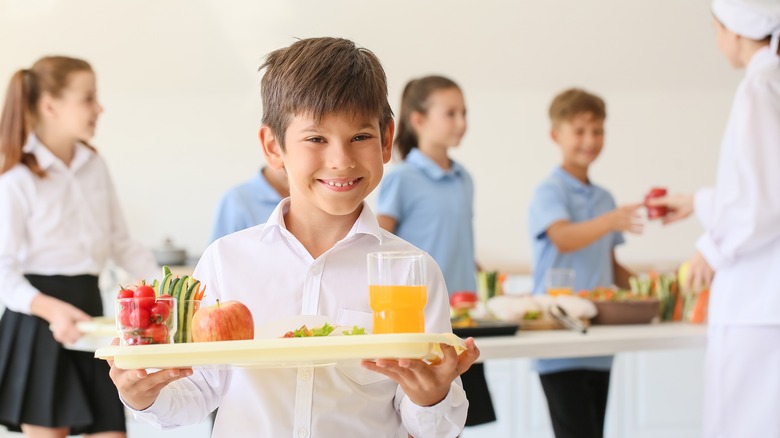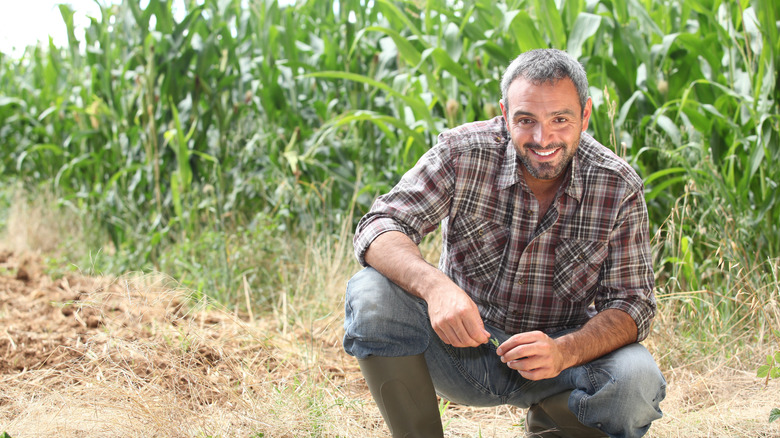How Minnesota And The USDA Are Partnering To Improve School Lunches
Earlier this year, in March, the U.S. Department of Agriculture began taking applications for an ambitious new program that would essentially help schools feed their students with nutritious food sourced from local and regional supply chains. The program was called the Local Food for Schools Cooperative Agreement Program (LFS for short), and it was funded with $200 million dollars, out of which state governments could apply for a grant, provided they were willing to work hand-in-hand with the USDA to help remake their state's food system for the benefit of farmers, ranchers, and, of course, students.
One month later, in April, the Austin Daily Herald reported that the Minnesota Department of Agriculture (MDA) was actively soliciting viewpoints from state residents during open sessions so that they could put together an application for the USDA's LFS program. As the Minnesota-based newspaper noted, the MDA was working closely not only with those employed in the state's educational system, but was also talking to farmers and other food industry sources so that they could properly craft their proposal to be acceped into the new program.
How the LFS program benefits Minnesota
It should come as no surprise then that Minnesota will in fact be the first state to directly benefit from the USDA's LFS program. The USDA recently revealed that it will be partnering with the MDA in a "cooperative agreement" with $3,458,752 in funding. Basically, the two agricultural departments — USDA and MDA — will work together to develop plans that benefit regional farmers, from whom food will be bought, while also benefitting those for whom the food is ultimately intended. Which is to say, students at the state's schools, who will be delivered nourishing, nutrient-rich, locally sourced meals via National School Lunch and School Breakfast programs.
"Strengthening relationships between local producers and schools is a long-term strategy to ensure our children always have access to nutritious foods in school, a win-win for child health and American agriculture," noted Stacy Dean, the USDA's Deputy Undersecretary for Food, Nutrition, and Consumer Servies, in the press release. "Through this program and many other efforts to support the school meal programs, USDA is committed to giving schools the tools they need to set children up to learn, grow, and thrive."
Minnesota's USDA connection is not limited to the LFS program, however. According to The Journal, it was also recently announced that the state will be able to feed an additional 90,000 students on Medicaid for free during the upcoming school year, thanks to its inclusion with seven other states in a USDA pilot program.

